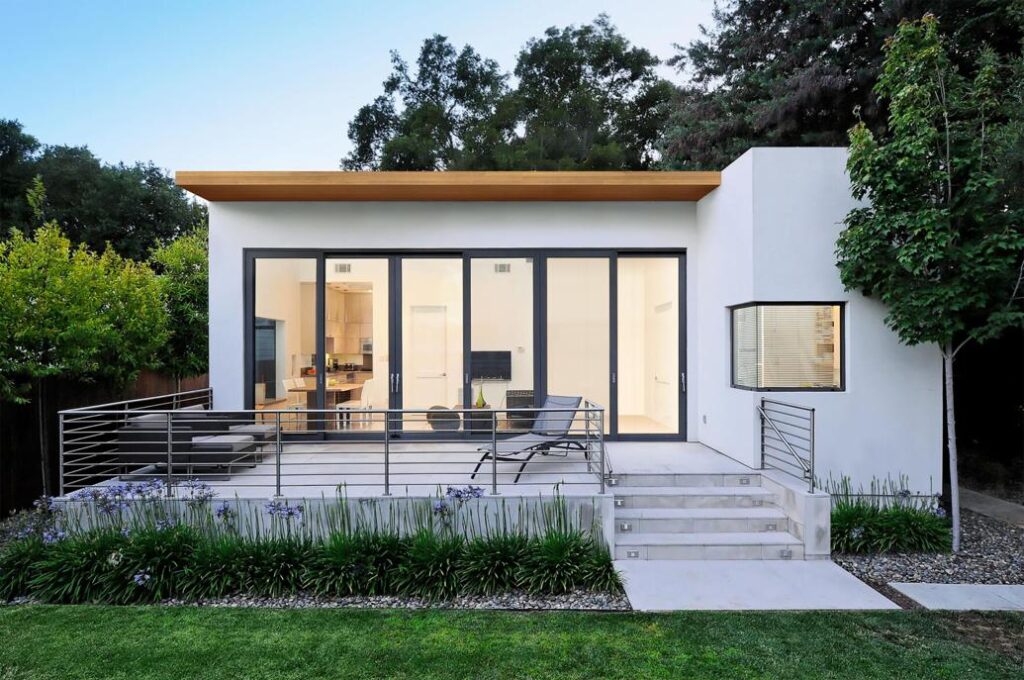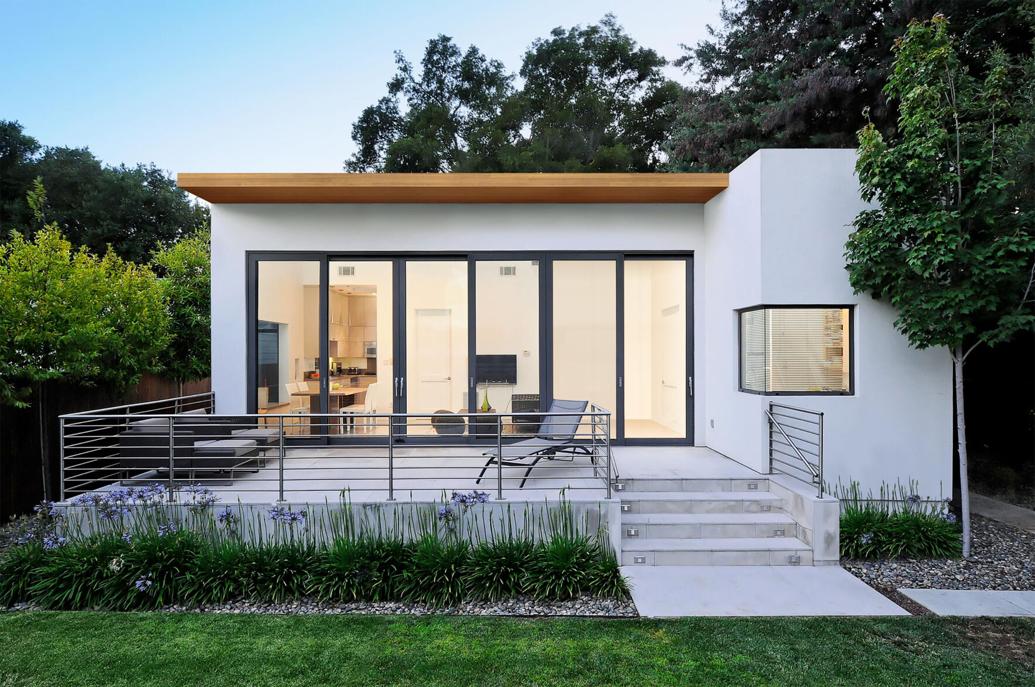
A Room of One’s Own ― The pandemic has pushed the demand for Accessory Dwelling Units, or ADUs, like this one in Palo Alto, Calif., designed by Maydan Architects. They fill an increased need for affordable housing or a separate home office. Fortunately, more city and state regulations are allowing them.
Last week, I wrote about a young family who, like many others reacting to the pandemic’s fallout, fled their condo and life in the big city for a larger home in the suburbs.
They are among the fortunate. Their jobs let them work remotely, and they had the resources.
While a city exodus is indeed one of many pandemic-driven housing trends, at the other end of the spectrum are millions whose living arrangements were upended due to job loss, closed college dorms, fear of nursing homes or a need to live near loved ones. Those motives fueled another trend: the rise of the Accessory Dwelling Unit, (which I inaccurately called Accessible Dwelling Unit last week. Sorry about that).
Also known as granny flats, casitas, guesthouses, pool homes, or caretaker quarters, ADUs are, by definition, second, smaller homes on the same property as a main house. They can be separate from the house or attached, but they will have a kitchen, bathroom and an outside entrance.
“It has to be a fully functioning little house where someone can prepare basic food and shower,” said architect Mary Maydan, of Palo Alto, California, who has designed five finished ADUs and has four on the drawing board at her firm Maydan Architects. Many will also have separate utility lines and a dedicated parking place.
Though such living quarters have been around for almost as long as homes themselves, what has changed is that ADUs are hot properties today, and that cities are relaxing rules so that more are allowed, real estate experts say.
“This change is happening across the country,” said Corina Rollins, a real estate appraiser who teaches real estate principles and economics at the College of Marin County. “In New York, where I grew up, it was common, but not legal, to turn a basement into a secondary living unit and rent it out. What we’re seeing today isn’t much different from those bootleg rentals, only now they’re more often legal.”
Largely in response to the pandemic, cities have begun to relax rules that used to bar ADUs, especially in expensive housing markets that have limited inventory. “What we’re seeing is a recognition that ADUs are important components of housing,” Rollins said.
“A year ago, almost no one knew what an ADU was,” Maydan said. “Now everyone does.” They are popping up everywhere, helping with the home shortage and providing that instant extra space families have needed.”
Before last year, only about 10% of her residential clients wanted to include an ADU in their home plans; today that number is over 50%, said Maydan, who built an ADU on her property in 2004 for her parents to live in. “California had a lot of rules back then that made it difficult. But not anymore. The pandemic has definitely changed the way we are building homes.”
Besides offering more independent living space for aging parents or boomerang kids, ADUs can also be revenue-producing rentals, or make great home offices and gyms. For some, they offer a sort of decompression space, a place to go to get out of the house, which we’ve all needed this past year.
Whatever the purpose, an ADU’s beauty lies in the fact that it is separate but near.
“The legalization of ADUs will continue because they help us offer more efficient housing without the stigma of your neighbor saying he’s going to turn you in,” Rollins added.
If you’re interested in creating one where you live, here’s what to know, so your ADU doesn’t stand for Another Dumb Undertaking:
CHECK FIRST: Although ADUs are gaining favor among cities, be sure to ask your zoning department about restrictions in your area. “Don’t go by what your friend tells you he did,” Rollins said. “You need to check with your city.”
KNOW YOUR OPTIONS: Those looking to add an ADU can either convert existing space like a garage, attic or basement, or build a new structure. Traditional construction (called stick built) is one option, but putting up a prefabricated ADU is also popular. Prefab ADUs come in sections assembled off-site, so go up faster and cost less. However, because they aren’t custom, they don’t always go with the main house’s architecture. A third option just coming to the market is the 3D-printed ADU, which I can’t even fathom.
TIE IT TO THE HOUSE: Maydan encourages homeowners to make sure the ADU doesn’t look like an afterthought even if it is. Connect it visually to the main house through architectural design or even by just adding steppingstones between the houses. For one homeowner, Maydan retrofitted a prefab ADU to better integrate it architecturally with the main house.
MAKE IT MULTIPURPOSE: The beauty of a well-conceived ADU is that you can build it and find, as your life flows along, the ADU serves different needs,” Rollins said. “What serves as your home office today may become a house for your child as he or she transitions from college to career, and later for your aging parents, and after that, it might become an income-producing rental.”
MOVE IN YOURSELF: ADUs can help aging homeowners who don’t want to move or sell their homes. If they move into the ADU on their property, they can rent out the main house to a family who needs the space. This lets the owners age in place and get a little income.
KNOW YOUR MARKET: While some studies have shown that homes with ADUs have been selling far faster during the pandemic than homes without and that these dwellings have added a nice bump to the selling price, whether you will recoup your investment depends on many variables, said Rollins. The initial cost and quality, visual appeal, and the demand in your area all factor in.
Original article found at https://www.nola.com/entertainment_life/home_garden/article_cff6f82c-9b95-11eb-b8ac-43b8346793c3.html

